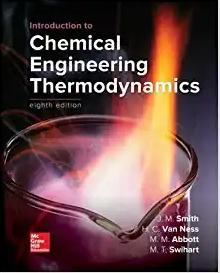Answered step by step
Verified Expert Solution
Question
1 Approved Answer
A jacketed stirred tank is used to cool a process stream by flowing cooling water through the jacket as shown below. Assume constant volumes, densities,
A jacketed stirred tank is used to cool a process stream by flowing cooling water through the
jacket as shown below. Assume constant volumes, densities, heat capacities. Simulate the
temperature control loop with Simulink and trend the response of the transmitter and controller
outputs for minutes to: a step change of deg C in process fluid temperature at time
minutes, a step change of deg C in coolant temperature at time minutes, a step change of
mmin in process fluid flow at time minutes. Use a real PID controller tuned for
quarter decay ratio response, a linear characteristics control valve with constant pressure drop,
a firstorder lag temperature transmitter with a min time constant and a deg C range, a
firstorder lag control valve with a min time constant and a mmin range. The
ultimate gain and period of the loop with a proportional controller were determined by a closed
loop step test to be: COTO and min, respectively. Process parameters are given below.
Properly label your Simulink block diagram and trend.
I. Process constants:
U overall heat transfer coefficient
U kJminmdeg C
A heat transfer surface area m
V stirred tank volume m
Vc coolant jacket volume m
rho process fluid density kgm
rho c coolant density kgm
cp process fluid heat capacity kJkgdeg C
cpc coolant heat capacity kJkgdeg C
II Design conditions:
v process fluid flow rate mmin
vc coolant flow rate mmin
Ti process fluid inlet temperature deg C
Tic coolant inlet temperature deg C
Step by Step Solution
There are 3 Steps involved in it
Step: 1

Get Instant Access to Expert-Tailored Solutions
See step-by-step solutions with expert insights and AI powered tools for academic success
Step: 2

Step: 3

Ace Your Homework with AI
Get the answers you need in no time with our AI-driven, step-by-step assistance
Get Started


